Realization of multicultural coexistence and a global campus
- Realization of multicultural coexistence and a global campus
-Aims of Toyohashi University of Technology (TUT) for academic year 2017- - Starting the TUT Global House
- Do you all know about our new library?
- Bilingual Classes
- On-the-job Training ? International and Global Development
Realization of multicultural coexistence and a global campus
-Aims of Toyohashi University of Technology (TUT) for academic year 2017-
President
Takashi Onishi
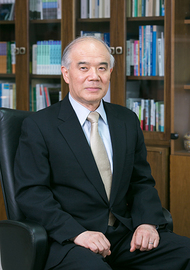
The Global Technology Architects Course that started from this academic year(2017) is one of the specific initiatives to achieve this goal, starting with 3rd year enrollment students. A course will also start for first year students from the next academic year(2018), and international students who directly enter our university from high schools overseas are on the rise. We hope that it will become a more exciting campus as multi-cultural exchange between international students with no experience living in Japan and Japanese students gets up speed. I believe that multicultural coexistence will not only allow students to open up their minds, but also improve the sensibilities of students, and this will enhance their aspirations towards both learning and research.
In addition, two shared house-type TUT Global House buildings where international students and Japanese students live and learn together were completed in spring of this year(2017), and residents have started to live in these buildings. At the TUT Global House, learning support programs and various events are planned and implemented with cooperation of the house master, student resident assistants, and faculty as an educational dormitory that fosters a global temperament, people skills, academic abilities, and leadership. As these activities are not limited to global student dormitories, but conducted in an integrated manner with existing student dormitories also located in the campus, they will influence the entire campus as we realize multicultural coexistence and a global campus.
In addition, the university library has been completely renovated, and was reopened in March this year(2017). It is located in the middle of the campus and its first floor has been developed into an area for interaction between Japanese students, international students, the faculty companies, and the local community as the Multi-Plaza. As the core of multicultural coexistence and a global campus for the creation of innovation through technology and the development of outstanding engineers and researchers with leadership abilities capable of performing on the global level, globalization will be spread to the whole campus.
The Onishi Plan 2017 also sets forth other themes aiming for transformation and development of TUT: the development of human resources who create innovation through technology, strengthening research capabilities centered around integrated research, creation of knowledge and technology that contributes to the formation of a safe and secure society, and promotion of researcher’s continuity and mobility. We will carefully implement activities based on each of these themes in order to achieve results.
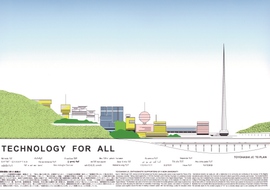
We would like to offer our thanks once more for the support we have received from many people in the region since we opened the university until today. We would like to leap ahead as a university that creates human resources capable of being active in various places around the world while remaining firmly rooted in the local community. We thank you for your continued support.
Starting the TUT Global House
House Master
Masayoshi Yamazaki
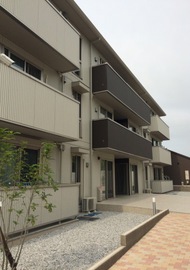
TUT Global House
The TUT Global House was built on campus as a place to foster leadership qualities that translate to the global stage through international lifestyle where Japanese students and international students can share housing.
Currently there are 60 students living in the dormitories including the 41 students in the Global Technology Architect Course (GAC) and the students in the regular courses (Five students in each of the 12 units, 11 of which are international students).
As the house master, it is my job to support and instruct the students so that each unit member can autonomously lead a safe, comfortable, fulfilling student life. To lead their lives in that way, I believe the cooperation of the Resident Assistants is also vital in achieving this.
The Resident Assistants are chosen by each unit, and they act more as a member, rather than a leader, who supports and gives advices together with the house master so that each unit can operate smoothly.
Based on their diaries, weekly discussion and various ways, I keep tabs on the atmosphere, interpersonal relations and inconveniences in each unit, and work closely with the teachers and related departments to decide on how best to support the students.
The Resident Assistants also support programs and events such as the TUT Expo, Open Campus and the university festival through autonomous meetings they hold every month to ensure the proactive planning, operation and participation in each event.
I think the residents may clash a little when it comes to lifestyle differences as they had lived in a completely different area surrounded by a different culture to date. How they handle these clashes amongst themselves is an important life lesson, and for them it should become a seed for psychological development.
I always strive to play ‘emotional catch’ with the Resident Assistants and residents. I try hard every day in the hopes that I can become their life ‘pilot’.
Third Year Student, Department of Electrical and Electronic Information Engineering
Yuta Honpo
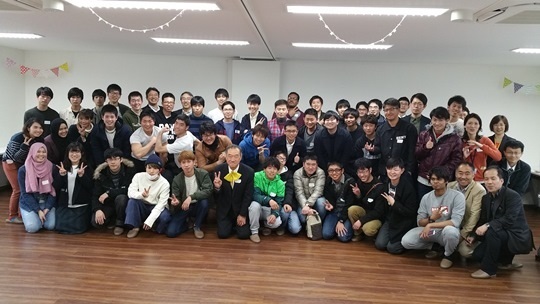
TUT Global House
We would like to offer our thanks once more for the support we have received from many people in the region since we opened the university until today. We would like to leap ahead as a university that creates human resources capable of being active in various places around the world while remaining firmly rooted in the local community. We thank you for your continued support.
Do you all know about our new library?
Deputy Director, Educational Affairs Division, University Library
Masayoshi Takayanagi
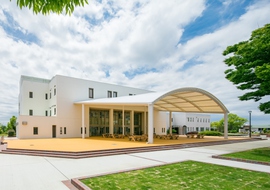
Public space
“It’s a library, but it’s not just a library!” That’s the feeling behind our new ground floor space. Renovation work extending for six months since September last year was finished on March21, 2017 in time for the graduation ceremony, and the library has reopened. On March 28 of the following week, the new library hosted a reception together with members of neighboring universities and the Toyohashi city officials, and from April we held guidance sessions about the use of the new library and of the resources targeted at new students. Before we knew it, two busy months had passed in such ways. Now we have finally had a chance to catch our breath. I guess you are all wondering about how many visitors we have had; in April we had approximately 15,000 visitors and in May we had approximately 17,000 visitors, 2.5 times more than the same months last year respectively. This is no doubt because of the Multi Plaza newly constructed on the ground floor.
I will tell you a little about the new ground floor, but first let us have a look at the library from the outside. A large tent has been erected in the public space in front of the library! It feels like an event venue. I cannot wait to see the stage for the university festival. Good luck to all those of you in the students’ association!
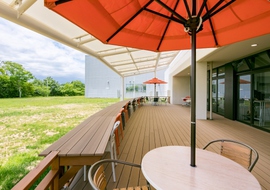
Open deck
If you walk under the event tent and enter the library from the front entrance, the first thing you come across is the counter. First you think ‘Oh, it’s a library after all’, but then you’ll look around and realize… there are no books! What is this wide, open space? Yes, it is the new face of the library, the Multi Plaza. Students can use this space at any time of the day in whatever style they choose, for individual study, to friendly group study, to enjoying chatting with friends or just to relax.
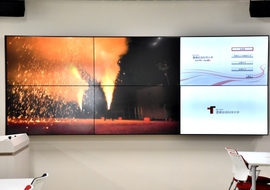
Multi Display
Next is the Collaboration Area that takes up the entire north side. We have equipped this space with a 120-inch high brightness projector, so we can hold research presentations and panel discussions for around 60 people. Also, if you open up the north floor and use the large monitor, you can fit around 100 people in. This August, , we hosted the General Meeting of the Association for University Libraries of the Tokai Region. Participants from other university positively commented like “it was fresh and great to have the meeting in such an open feeling area” and so on.
The room located to the central south side is the Study Support Area. The walls are lined with benches where students can sit casually. It is almost like a waiting room. Here students can chat and study with their friends after classes. Now let us leave this area and walk outside. There is a large open deck where students can eat and drink. How would you like to spend a nice lunchtime in this bright, open space? The breeze feels good especially in the fine weather.
Back to the main topic ? Next is the Global Lecture Area, a space that was constructed to embody the ‘realization of a multicultural global campus’, the featured theme of this volume. It is located to the south-east, just behind the Collaboration Area. The most eye-catching item in this area is the multi-display system, six 55-inch displays that span the entire wall named the ‘Wall that Leads to the World”. We are currently planning for remote classes with Queens College of the City University of New York and TUT-USM Penang, Malaysia. We hope students can use this space as a place for bi-directionally communication. Also, as a place to experience Japanese culture, we have prepared videos that introduce the city of Toyohashi and neighboring communities displayed on digital signage, multilingual information pamphlets about Higashi Mikawa region and lots of informative magazines. See for yourself.
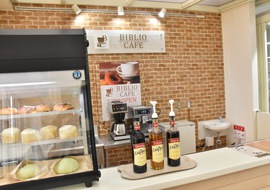
Biblio Cafe
Anyone who has ever been here would no doubt be curious about the next spot, “Biblio Cafe,” the cafe at the back of the north side. Beverages are allowed anywhere on the ground floor, so check out the cafe at your leisure. We will be waiting for your visit this unique cafe.
We all look forward to you all using the whole Multi Plaza, including the Global Lecture Area, so that it becomes a space for interaction to achieve a multicultural global campus.
And this concludes my introduction of the ground floor. Maybe one day I can talk about the actual library on the second and third floors if I get the chance…
Bilingual Classes
Chief WG Examiner and Professor of Mechanical Engineering, GAC and Bilingual Education
Kenichiro Mori
Bilingual classes started in full-swing this year when students in the Global Course entered third year. The year before last there were 34 bilingual classes, last year there were 139 bilingual classes held with cooperation from every teacher, and almost all of this year’s third year classes are conducted in two languages. Recently there has been an increase in universities of technology that conduct postgraduate classes in English, but there are few universities that have introduced English language classes at the undergraduate levels, and our university is a leading figure in Japan’s global engineering education.
The bilingual classes conducted at our university create an environment where Japanese students and international students can learn together, by adjusting how much English and Japanese is used. As you can see in the following diagram, the textbooks are in English, the explanations are in Japanese, teachers will write in both English and Japanese and questions and answers to tests can be written in either English or Japanese, and when compared to all-English classes, bilingual classes have the following benefits.
1) By using English textbooks, students can study the correct English terms, but because the explanations are in Japanese, the students are able to understand the content, which prevents a decline in understanding which is apparent in the English classes.
2) The international students can improve their Japanese skills through the Japanese explanations and English and Japanese notes on the board, and supplement their understanding of the class content using the textbooks.
3) Most of the classes are bilingual and English, and many of the specialized classes include some English, so the students gain more motivation to study English, and they can improve their ability to express their ideas in English while studying the technical terms in both English and Japanese.
4) Teachers can adjust the ratio of English and Japanese according to the students’ level, and conduct education in touch with the modern era.
5) For many Japanese students, their listening score in the TOIEC English text is only 70% of their reading score, but using English language textbooks is a style of education that places more importance on ‘reading and writing’ than ‘listening and speaking’.
6) Mixing the global course students and general course students together in the same class prevents an increase in the burden placed on teachers.
7) The teachers have more opportunities to write and read English in preparing and conducting classes, and this strengthens their ‘writing and reading’ skills. These skills are not only useful in an educational setting, they also lead to an improvement in English presentation and paper writing skills, which strengthens their ability to communicate their research globally.
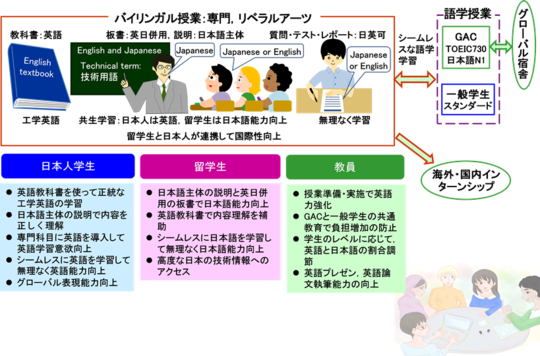
On-the-job Training ? International and Global Development
Chair of the On-the-job Training Committee and Professor of Electrical and Electronic Information Engineering
Atsunori Matsuda
The on-the-job training offered at our university started over 40 years ago when the university was founded in 1976 under the premise that it was important for students to experience the challenges faced by engineers and researchers in the real world. It is counted as six compulsory units and runs for two months from the beginning of January to the end of February of the fourth year of an undergraduate course, aiming to provide students with an opportunity to learn practical skills and build the necessary character to become a leading engineer through close interaction with society. It goes without saying that this class is a unique element of our university’s educational curriculum, but the structure of industrial society is changing rapidly and today there is a demand for preparations and reforms that foresee 10 years into the future.
The educational aim for Toyohashi University of Technology is to foster leading practical and creative engineers and researchers whom have rich human qualities, global sensibility and the ability to live in harmony with nature. In this sense, we consider the on-the-job training to be of the highest importance it has ever been, and in addition to the on-the-job training we offer at Japanese companies, we also conduct ‘overseas on-the-job training’ and ‘project-based long-term internships’ that last for six months from the end of the fourth year of a student’s undergraduate studies to the first year of their postgraduate studies to diversify and globalize the program.
Looking back on the overseas on-the-job training, due to constructive systematic reforms to on-the-job training in 2003, the ‘Overseas Internship System for Training in Foreign Companies and Organizations’ was introduced to keep up with the social demand for people with superior, internationally-accommodating communication skills and leading talent who can view things with broader perspectives. Diagram 1 shows the number of students who have undergone overseas on-the-job training.
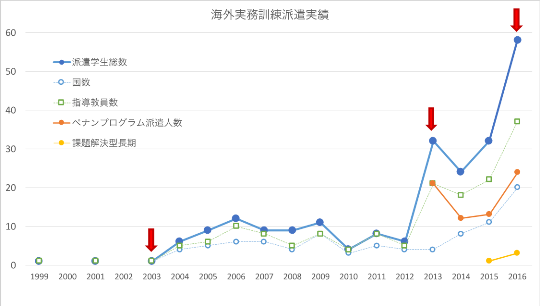
Figure 1 Fiscal Year Trend of Abroad Practical Training Dispatch Results (From External Advisory Committee Papers (2017.3.30) of Practical Training)
Diagram 2 shows the destinations of the overseas on-the-job training since 1999. If you exclude Malaysia, you can see that most of the overseas destinations are universities or research institutes. On the other hand, a prominent feature of the programs of the on-the-job training the ‘Penang Global Talent Program’ offered in Penang, Malaysia is that every student completed their training at foreign-owned companies, local Malaysian companies or Japanese companies. The fact that we can conduct these programs is because of the passion towards on-the-job training and cooperation from USM, our most important point of international exchange, and everyone at the International Education Center in charge of global education as part of the Tri-Institutional Collaborative/Cooperative.
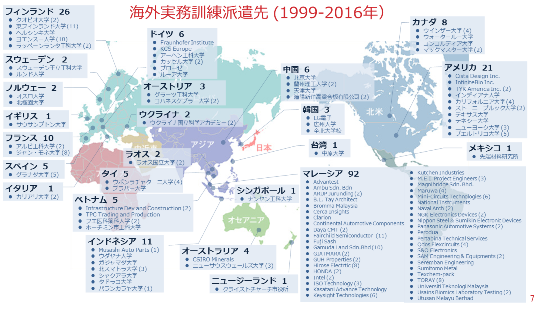
Figure 2 Overseas Practice Training Destination (1999-2016) (From Practical Training External Advisory Committee (2017.3.30))
The Top Global University Project at this university aims to foster creative, international leaders in technological science known as ‘global technology architects’ by establishing an environment where undergraduate and postgraduate students at home and abroad can overcome language and cultural barriers and apply themselves to their studies together. We recognize that the educational effects of the overseas on-the-job training and internships are large, and the On-the-job Training Committee will continue to strengthen this program to realize our objectives. We hope that students can broaden their perspectives of the world; challenges themselves to demand a place they can contribute overseas and that everyone inside and outside of the school can continue to understand and support the program.





